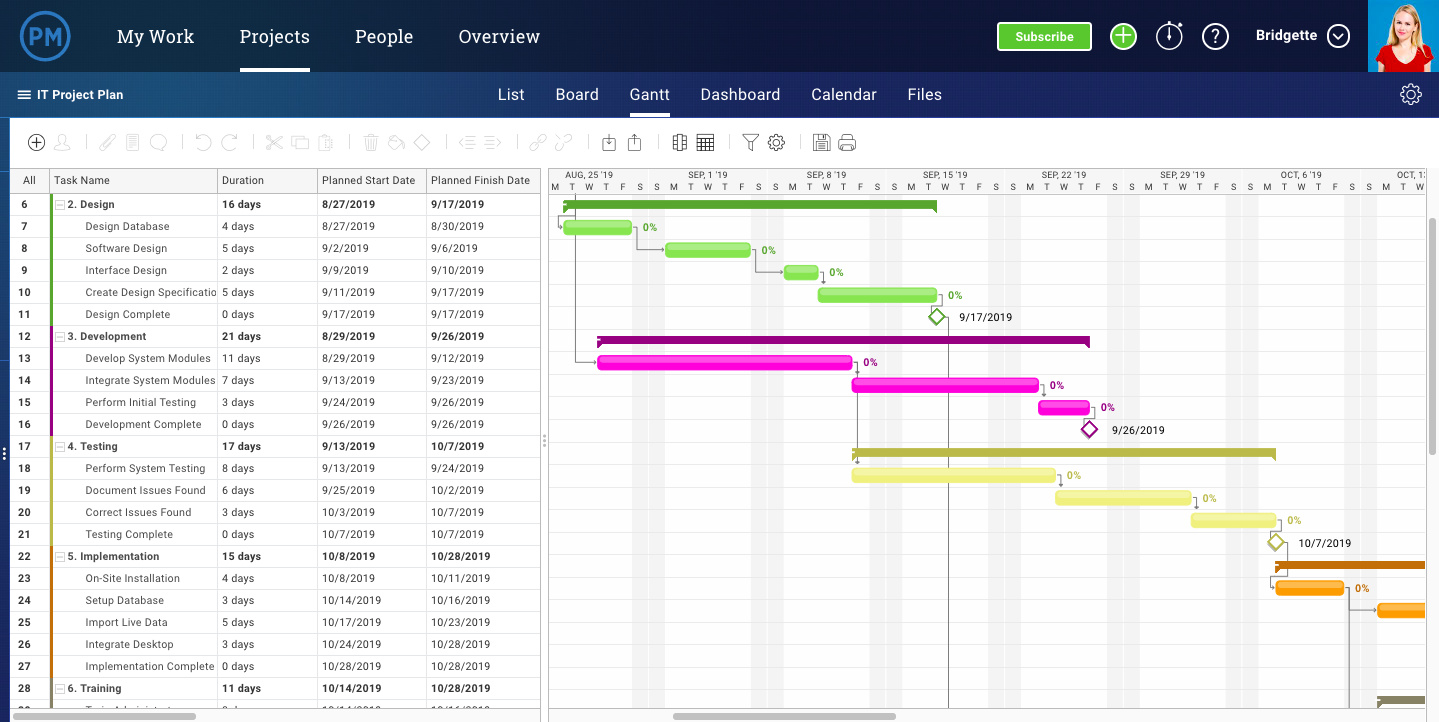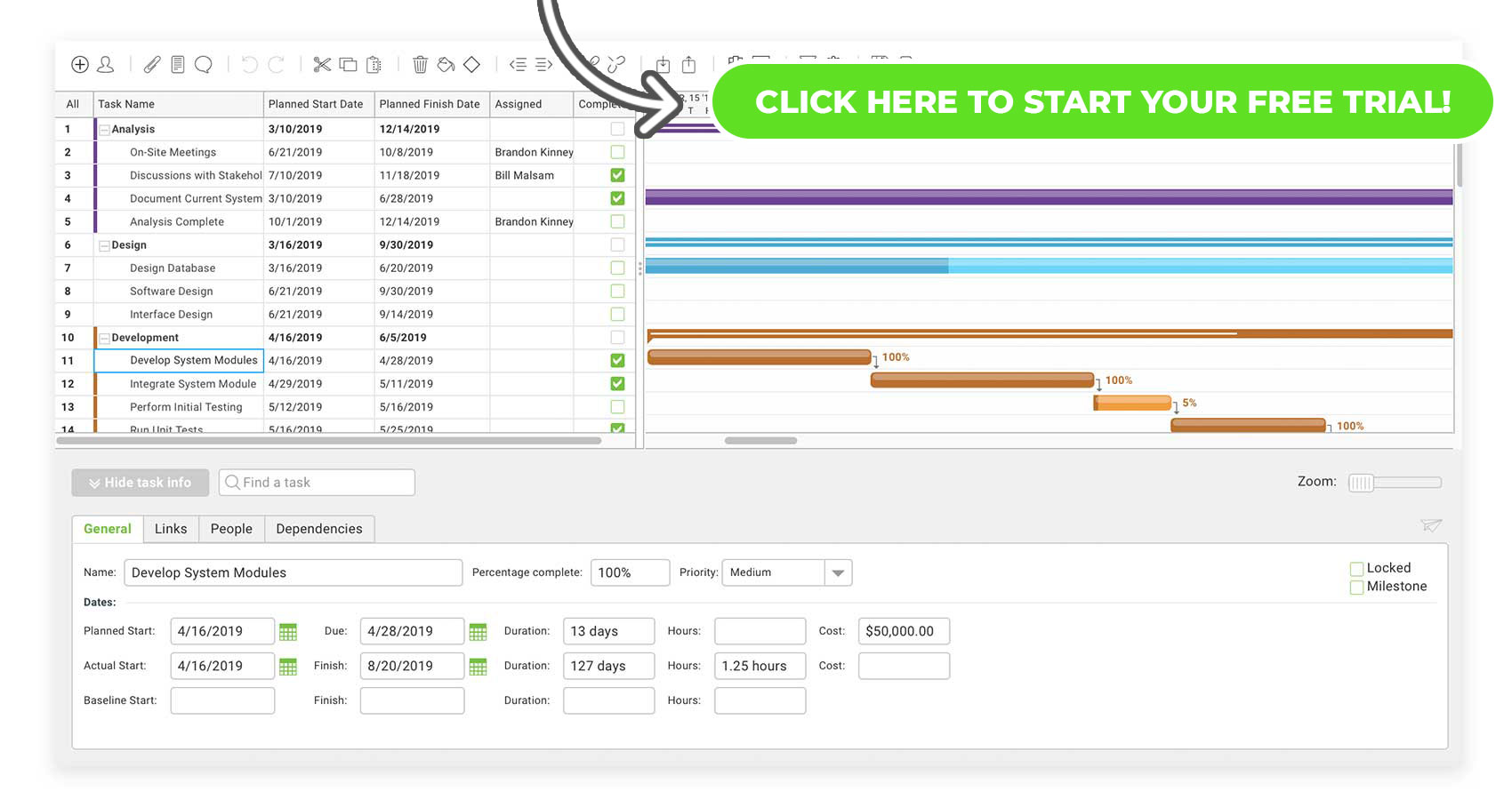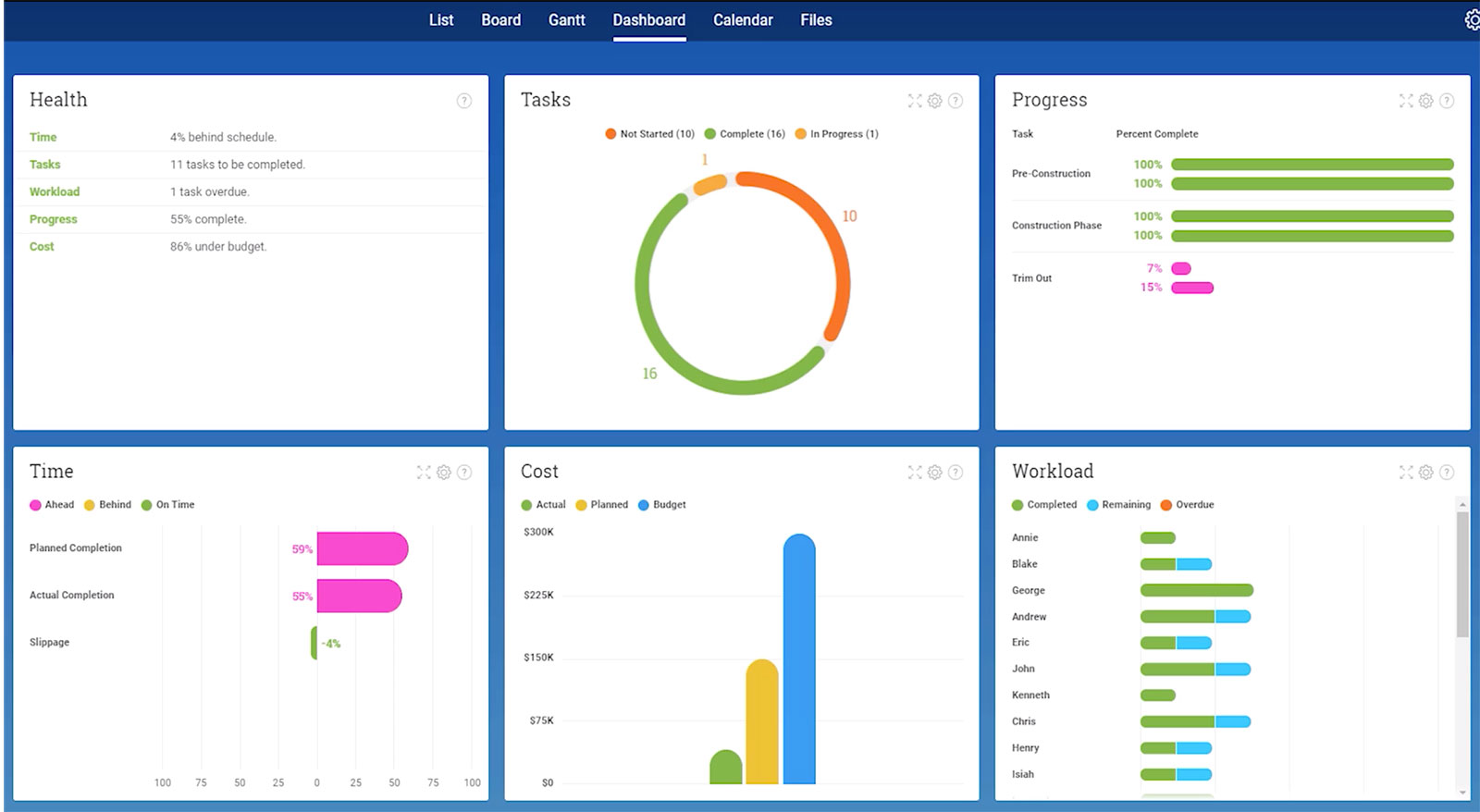According to Newton’s third law of physics, every action in nature has an equal and opposite reaction. The same can be said for the field of project management, where every constraint usually impacts another constraint, and every missed deadline puts the project off the delivery date by just a little bit longer.
Newton’s third law is also true in the case of agile vs waterfall, where one sprang to life as a reaction to the other. But which one was first, what are their differences, and do they have anything in common? Let’s take a look.
What is Waterfall?
The waterfall methodology is a process where project activities are broken down into linear phases. Created a few decades before the agile methodology, each phase is reliant upon the deliverables of the previous phase. Commonly used in engineering and software development, it’s a more structured approach because progress falls in one direction, like a waterfall, from ideation to launch. One of the very first citations of the waterfall method was in 1970 by Winston W. Royce.
The waterfall model is used in a variety of industries, from construction to marketing, but we’ll talk about it in software development terms as we define the different phases.
Phases of the Waterfall Method
- Research and Interviews: This involves capturing system and software requirements for the product by researching and interviewing the stakeholder team, the engineers, getting customer feedback and researching competitor product offerings.
- Design: There are two parts to this phase, including logical design and physical design, all resulting in the software or product architecture.
- Implementation: In this phase, software engineers and developers return a beta version of the product after synthesizing the information from the research and design phases.
- Verification: In the verification phase, the product team gets user testing data and customer feedback regarding the product proving its validity.
- Maintenance: Once the beta version has been tested and the final product has been launched to the general population, it’s in this phase that bug fixes are made and features updated.
Each phase must be completed before the project can move on to the next phase. It’s particularly formal in execution, where phases are almost never repeated and exist in isolation.
Benefits of Waterfall
The good thing about the waterfall method is that it places more importance on a structured, well-documented approach, so that no knowledge is lost at any turn. Whether there’s a hiccup in the project or an addition made at a later phase, all steps that have been taken up until that point have been recorded for posterity. The phases are commonly laid out on a Gantt chart, where tasks are made into timelines and dependencies are linked.

It’s often said that the waterfall method is best for projects where the scope is fixed, requirements are understood, and the design team knows exactly what code needs to be embedded.
Drawbacks of Waterfall
The downsides to the waterfall method are that the customers never really play a role in the development of the software once their requirements are recorded during the research and interview phase. So interaction between the brand and its audience is extremely limited to just the very beginning and the very end of the project.
What is Agile?
Agile is a methodology suited for software developers and engineers where requirements and their solutions change over time through collaboration by bridging the gap between cross-functional teams and the end user. It’s because of this that agile is an extremely iterative and adaptive methodology that allows for tons of flexibility and rapid change.
Even though agile is popular, the history of agile is in its infancy. In 2001, a group of 17 software developers got together in a resort in Utah, and together came up with the “Manifesto for Agile Software Development” as a reaction to what they deemed as heavy project management methodologies—like waterfall.
Agile Principles
The main values of agile include prioritizing individuals over tools, functioning software over documentation, collaboration over contracts and change over planning.
From that, there are 12 principles of agile that elaborate on the main values, including prioritizing customer satisfaction, encouraging change requirements, delivering working software, cross-team collaboration, face-to-face conversation, sustainable development, simplicity, the best architecture and a team that regularly seeks to promote efficiency.
Benefits of Agile
The benefits of agile are reflective of its values and 12 principles. This process tends to have the highest customer satisfaction rates, routinely delivers high quality products, reduces risks, increases project control and generates a better return on investment, faster.
But as it is with any endeavor, there are downsides here as well.
Drawbacks of Agile
When it comes to agile, there is sometimes an element of unpredictability, especially for those software developers and engineers who require a bigger picture planned out ahead of time to better understand the project scope.
Additionally, while opening the communication lines between end users and software developers means that you’ll produce a product that more customers will appreciate, it also means that there is more time wasted on communicating between teams. Ultimately this produces a better quality product, but it comes at the cost of time.
Agile vs Waterfall: The Major Differences
There are many differences between agile and waterfall, but the major ones lie in the details.
Waterfall as a process is linear, while agile is iterative. What that means is waterfall works best when the scope and any possible risks are assessed at the outset, whereas with agile, the scope doesn’t really need to be defined in the beginning, and change requests can be made as long as it’s within time and budget.
Waterfall is better for large teams and doesn’t require too much coordination across teams as everyone has a role and knows what part they play in the project. Agile works best when it’s executed inside small to medium-sized teams that have a high level of cross-integration.
Additionally, customer feedback is given at different phases between the two methodologies. Customer feedback is a permanent fixture inside the agile methodology, while it’s only present during milestones for the waterfall methodology.
From a funding and budgetary perspective, agile works best at increasing funding at each project milestone, while waterfall works best when dealing with contracts up-front.
Do They Have Anything In Common?
Similarities between the two methodologies revolve at higher levels, mostly around feasibility. In both agile and waterfall methodologies, there has to be some sense of feasibility and opportunity for funding before work on the project can begin, whether that’s a contract up-front or percentage of the payment at each milestone.
There is also planning involved in both methodologies, however they are done at different phases. In the waterfall methodology, planning is front-loaded to the beginning of the project on a highly-detailed level to reduce risk and avoid changes once the project has begun. In the agile methodology, there is also a considerable level of planning done, however this is done during sprint planning when the developers are ready to take pieces of the project and make a plan to develop.
Additionally, there is much to be monitored and reported on in both the waterfall methodology and the agile methodology. In the waterfall methodology, project progress is measured alongside the project plan, whereas with agile, the project progress is measured against every sprint.
It’s important to mention that both methodologies use Gantt charts to ensure their project is moving full steam ahead with no roadblocks or hiccups along the way.
How ProjectManager.com Helps with Agile and Waterfall Projects
Whether you’re using the agile methodology or the waterfall methodology for your next software project, you’ll need a cloud-based tool to cut back on emails and make communication between teams and customers seamless.
Need to assign tasks to certain offsite team members in seconds? ProjectManager.com has Gantt charts that help you measure out your next sprint or plan out your next phase based on your current benchmarks. Whether you’re pivoting fast or planning a multi-phase project at the outset, you can line up tasks with dependencies within and across projects, not matter how collaborative your team needs to be.

And regardless of whether or not you’re using waterfall or agile for your next project, ProjectManager.com gives you the ability to monitor and report on every level of the process. The real-time dashboard shows you the status of each task and team workload instantly. This helps you pivot quickly in an agile project, or recognize that a scheduling change needs to be made in a waterfall project.

Missed deadlines and a lack of communication can act as roadblocks in your project, no matter which type of methodology you’re employing for your team. That’s why ProjectManager.com is dedicated to giving teams the software they need to plan processes, assign tasks and collaborate effectively no matter where you’re located. Sign up for our free 30-day trial today.
No comments:
Post a Comment